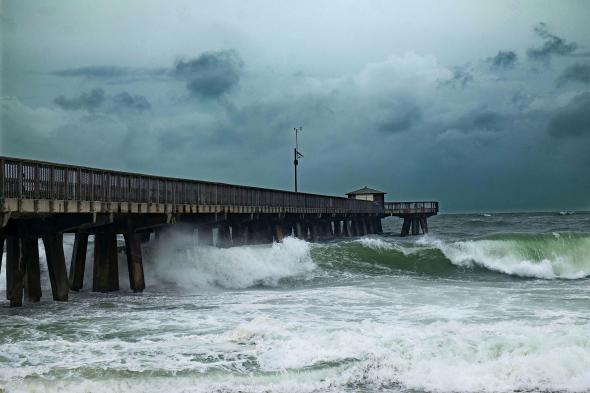Hurricane Matthew’s Destructive Storm Surges Hint at New Normal

As Hurricane Matthew pushes floodwaters into seaside towns from Florida to the Carolinas, climate scientist Andrea Dutton wonders if the most powerful hurricane to hit the United States in a decade will serve as a wake-up call to the perils of rising seas.The vulnerable coast needs to pay attention, says Dutton, who teaches geology at the University of Florida in Gainesville. “Matthew can help to change the conversation, in the way that Katrina did in New Orleans,” she says. “When all these cities were developed, sea level was very stable. Our whole way of life is set up around the concept of having a stable coastline. We are entering a new normal. We need to redefine our relationship with the coastline and that means rethinking a lot of different things.” Yet along the eastern seaboard, in some communities, state and federal lawmakers are still debating the existence of climate change, even as the seas rise incrementally higher on their beaches. In Florida, where the streets of Miami Beach and Fort Lauderdale flood regularly at high tide, Gov. Rick Scott famously avoids the subject of climate change and Marco Rubio, running for re-election to the U.S. Senate, does not accept climate science. In North Carolina, legislators “outlawed” efforts to study the impact of sea-level rise on the ribbon of barrier islands known as the Outer Banks. Consequently, most planning that is being done occurs at the local level, where few cities and counties have the money to fund the kinds of big projects needed to adapt to their changing circumstances. “If you look at Louisiana, post-Katrina, they have a very extensive coastal plan,” says Dutton. “It’s online. They have done different analysis. What projects could they invest in? How long would they last? What benefit would they get out of it? We have nothing like that in the state of Florida and it’s just shocking.”
Rising Water
The ocean along the East Coast is projected to rise one to four feet, according to the National Climate Assessment, while storms are forecast to become more frequent and more destructive—as Hurricane Matthew showed when it grew into a monster storm that forced more than two million people in the southeastern states to flee to high ground. Matthew, which left a trail of wreckage in the Caribbean and killed hundreds of people in Haiti and four in Florida, is being called a “generational” event. Even as its winds weakened, Matthew’s sheer size and slow-speed trek across the Carolinas saturated the coast with enough rain to cause flooding on top of the storm surge. St. Augustine, the 511-year-old tourist town in northern Florida, was swamped by a record-breaking nine-foot storm surge, as was Tybee Island off Georgia, where high tide and the storm surge coincided to inundate the low-lying barrier island.

